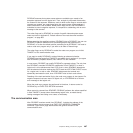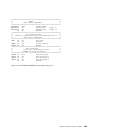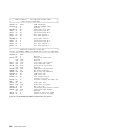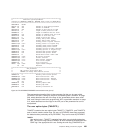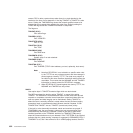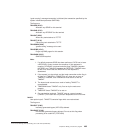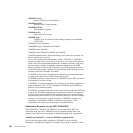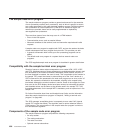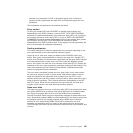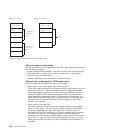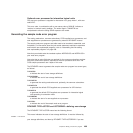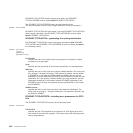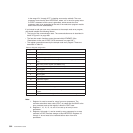TWANLD of the communication area, and the length of the data in field TWANLDL.
The data is logged to the CSNE transient data queue for future inspection.
Note: No data in excess of 220 bytes is logged.
You can also send user-written messages to the CSNE log using the transient data
facility. To write your messages, you must code the EXEC CICS WRITEQ TD
instruction directly into the node error program.
TWAPIP — and application routing failure:
The EXEC CICS ISSUE PASS command passes control from CICS to another
named VTAM application. For programming information about the EXEC CICS
ISSUE PASS command, see ISSUE PASS, in the CICS Application Programming
Reference manual. The ISSUE PASS command in turn invokes the VTAM macro
CLSDST with OPTCD=PASS, and, in addition, if NOTIFY has been specified on the
CLSDSTP system initialization parameter, with PARMS=(THRDPTY=NOTIFY).
CICS is then notified of the outcome of any CLSDST request.
This notification results in an informative message being issued, and causes
DFHZNAC to invoke your NEP, whether the CLSDST request has failed or
succeeded. The NEP can discover that a CLSDST OPTCD=PASS request is in
progress by examining field TWAPFLG for the pass-in-progress indicator, TWAPIP.
The success or failure of the CLSDST OPTCD=PASS request can be determined
by examining the error code at TWAEC.
If the pass operation fails, DFHZNAC sets up a default set of recovery actions that
can be modified by your NEP. A possible recovery, when, for example, the target
application program is not active, would be to reestablish the session with the initial
application using a SIMLOGON request and for CICS to send its “good morning”
message to the terminal. The default action is to leave the session disconnected
and to make it NOCREATE.
If CLSDSTP=NONOTIFY has been specified, and autoinstall is being used, CICS
takes no action, even if the ISSUE PASS fails.
If persistent sessions support is active, autoinstall terminals are deleted after the
AIRDELAY, so any expected NEP processing as a result of CLSDSTP=NOTIFY
being coded does not take place.
The additional system parameters (TWASYSPM)
If a data element referenced in this section of the parameter list (for example, the
TIOA) does not exist when the NEP is driven, its address and length fields are set
to zero.
Fields TWAPNETN, TWAPNTID, and TWAUPRRC can be reset by the NEP. The
use of these fields is discussed in “Data storage key for task-related user exit
programs” on page 290.
XRF parameters (TWAXRNOT)
These fields can be reset by the NEP. See “Using the node error program with XRF
or persistent sessions” on page 510.
Chapter 9. Writing a node error program 495



